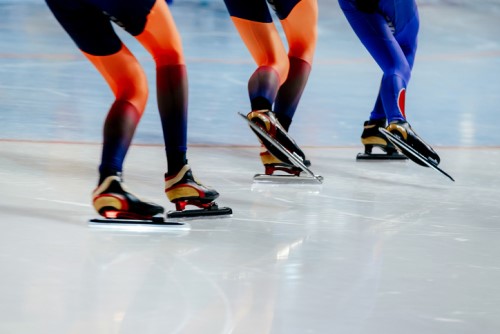

Before crowds could gather in PyeongChang for the opening ceremonies of the Winter Olympics, design professionals and contractors created the ice rinks, ski jumps, and bobsled tracks on which athletes compete.
For an event as big as the Olympics, professional liability insurers also worked hard to help clients mitigate the risks that come with being involved in huge sporting events.
The PyeongChang Olympic Stadium alone, for instance, holds 35,000 spectators. The obvious risk from buildings with such large capacity is bodily injury to fans and athletes.
Dan Gmelin, vice president of underwriting at Argo Pro, points to a speed skating arena as an example of the array of concerns on MEP engineers and contractors’ minds.
“If there’s anything wrong with the ice, obviously then you’re going to have a problem,” said Gmelin, who is also the head of architects, engineers and miscellaneous professional liability. “If they catch an edge because the ice is not perfectly flat, that’s a torn ACL, which is easily a major lawsuit for a world class athlete.”
The claims from an injury like that can be high.
“If a contractor has a $1 million limit, that’s a limit loss,” said Gmelin. “Not only is there bodily injury and medical payments, there’s mental anguish, loss of future earnings, loss of endorsement.”
The safety of construction crews working on Olympic structures is also a liability. Building an Olympic stadium is a unique construction project in that there is a definitive deadline, which Gmelin says can pose the biggest risk for professionals and contractors working on the structure.
If a residential or commercial building doesn’t open on time, people and businesses move in later. If a stadium for the Olympics isn’t finished by the deadline, the show must go on.
“It’s a major problem if all of a sudden the stadium or anything that’s being constructed is not ready because the events are going to be held regardless,” said Gmelin.
A delay along the way might mean contractors have a tighter timeframe to complete their work, which then could lead to serious liabilities.
“Anytime you’re rushing a construction project, you not only pose a risk to the structural integrity of the final project, but you’re also posing a risk to workers because if they’re feeling pressure to move quicker, maybe they don’t strap in the harnesses when they’re at height and then all of a sudden they take a fall,” said Gmelin.
With the pressure of performing – for athletes, but also the people behind the stadiums – making sure design professionals and contractors know exactly what they’re getting into when bidding for an Olympic contract in the first place is key.
“It would be great on anyone’s resume to include the fact that they did some construction for the Olympics, and so a lot of times, when these contractors really want to win a bid, they will give into anything,” said Gmelin. “That’s tough because when all of a sudden a claim gets brought, they not only don’t have insurance, but don’t have sufficient insurance. They also gave into terms and conditions in the contract that put them at great risk for any little error that could even be possibly alleged by a plaintiff.”
Related stories:
IIHF agrees to provide insurance for NHL players at Winter Olympics
Major sporting events offer an insurance bonanza
